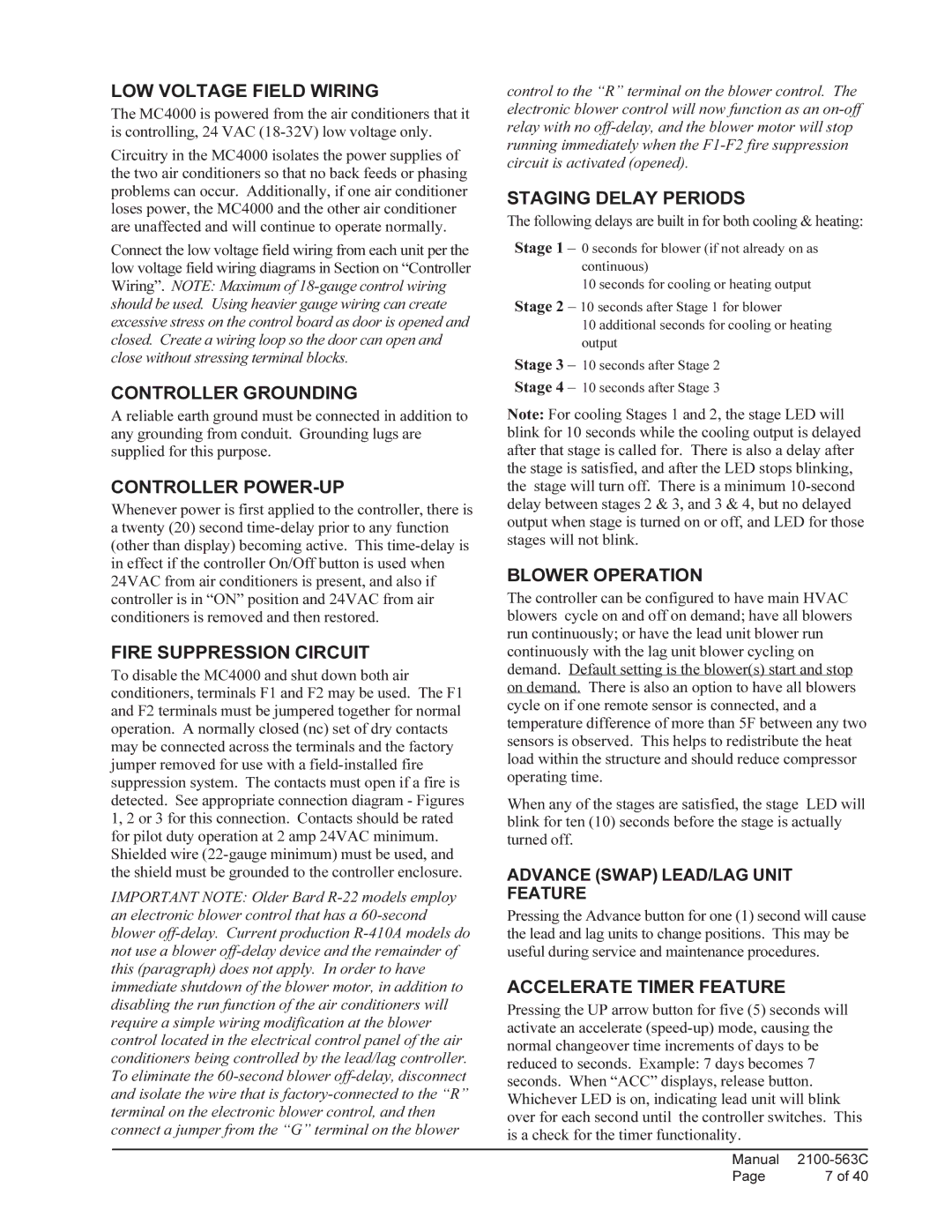MC4000 specifications
The Bard MC4000 is a state-of-the-art multi-channel wireless communication system, designed primarily for the needs of professionals in various industries. Known for its robust performance and exceptional reliability, the MC4000 is an ideal solution for events, concerts, large venues, and critical communications in diverse environments.One of the main features of the MC4000 is its multi-channel capability, allowing it to support a range of frequencies simultaneously. This feature prevents interference from other devices and ensures clear, uninterrupted communication. The system supports multiple transmitters and receivers, enabling large teams to communicate effectively without the need for cumbersome cables.
The Bard MC4000 utilizes advanced digital signal processing technology, offering enhanced audio quality. This technology minimizes background noise and provides crisp, clear audio transmission even in challenging environments. The system also features automatic frequency selection, which scans for the best available frequencies, ensuring optimum performance at all times.
The MC4000 is designed with user-friendliness in mind, featuring an intuitive interface that allows for quick setup and operation. The clearly labeled controls and bright display make it easy for users to monitor audio levels and battery life, ensuring seamless operation during critical moments. Furthermore, the system is compatible with a variety of microphones and headsets, providing users with the flexibility to choose the equipment that best suits their needs.
Durability is another key characteristic of the Bard MC4000. Its rugged construction can withstand demanding usage in various environments, from outdoor events to industrial applications. The system also includes weather-resistant features, making it suitable for operations in adverse weather conditions without compromising functionality.
In terms of connectivity, the MC4000 supports both wired and wireless options. This versatility enables users to switch between modes depending on their needs or specific venue requirements. The built-in rechargeable battery ensures extended usage, eliminating the hassle of frequent battery replacements.
Overall, the Bard MC4000 is a versatile, high-performance wireless communication system that meets the demanding needs of modern professionals. Its combination of multi-channel support, advanced audio technology, and user-friendly design makes it an essential tool for anyone needing reliable communication in their operations. With the MC4000, users can expect clarity, durability, and performance that can keep pace with their dynamic work environments.
